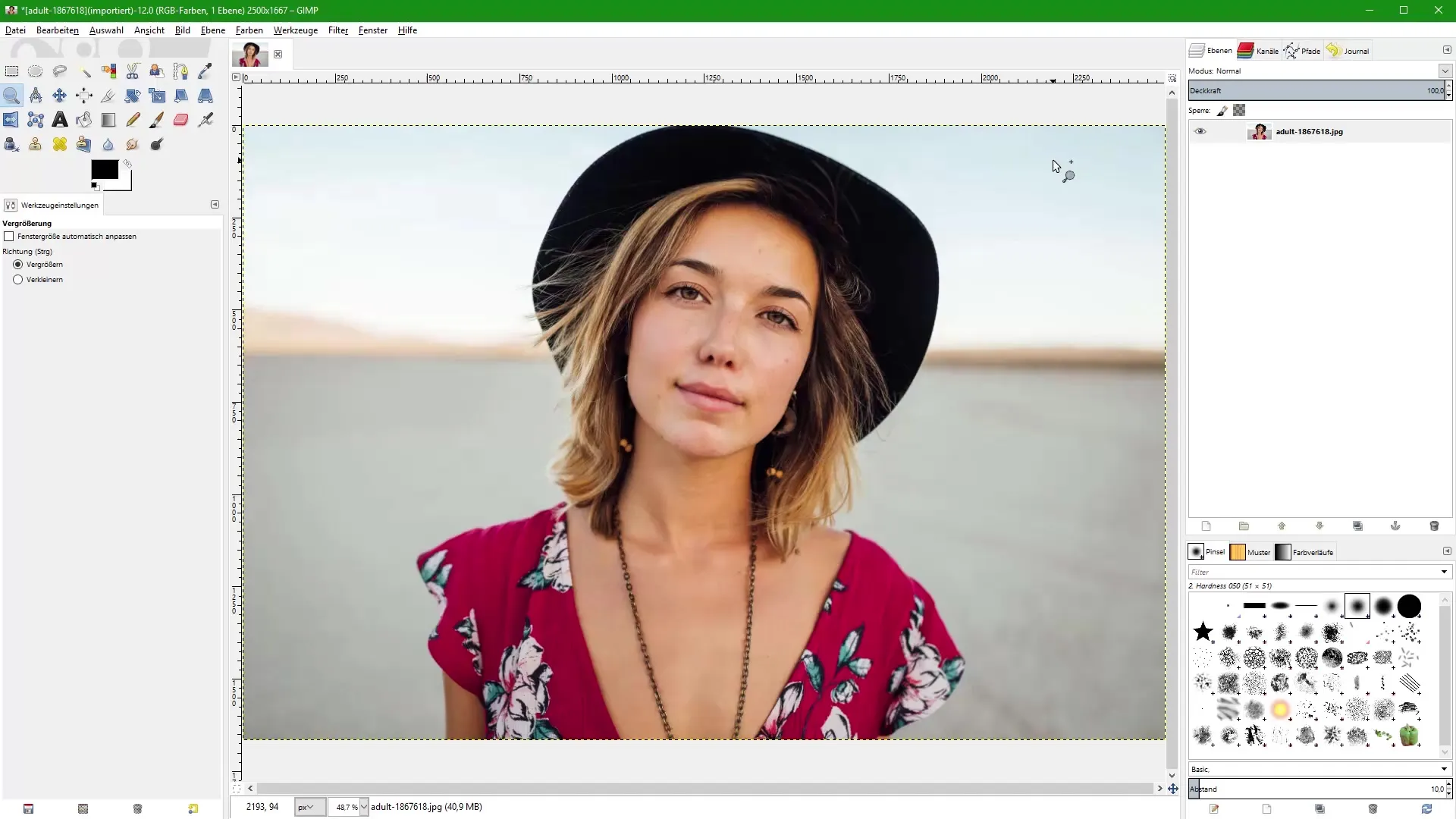GIMP, the GNU Image Manipulation Program, is a powerful software for image editing that provides you with extensive tools to edit and manipulate digital images. Whether you want to enhance photos, create creative artworks, or design graphics for web and print – GIMP offers you the necessary functions, and the best part is, the software is completely free. Portable alternatives like Adobe Photoshop or Affinity Photo not only cost money but also require monthly subscriptions or high one-time payments. However, while GIMP offers you a lot, you should also be aware of its limitations. In this tutorial, you will learn everything you need to know to successfully get started with GIMP.
Main insights
- GIMP is a free image editing program, ideal for beginners.
- It uses pixels to create images, providing a solid foundation for image editing.
- GIMP does not offer the full functionality of more expensive software like Photoshop, but it is an excellent choice for basic and intermediate editing.
- The software supports commercial work and has a large selection of filters and tools.
Step-by-Step Guide
1. Install GIMP
Installing GIMP is the first step to diving into the world of image editing. Visit the official GIMP website and download the latest version. Follow the installation instructions that apply to your operating system.

2. Get to know the interface
Once GIMP is installed, open the program. The interface may initially seem overwhelming, but do not confuse this multitude of tools and functions with complexity. You will need to familiarize yourself with the various components of the interface such as the toolbox, image window, and layers window.
3. Import an image
Load an image into GIMP to start editing. This can be easily done via “File” > “Open”. Select an image that you want to edit. Make sure the image is in a common format like JPG or PNG.
4. Zoom in on the image
To make precise changes, you should zoom in on the image. You can adjust this by selecting the zoom option in the menu bar under “View” or by using the keyboard shortcut Ctrl + Plus. A zoom level of 1600% allows you to see the image details like pixel structure accurately.
5. Tools for image manipulation
GIMP provides various tools for editing your image. The most common ones include the selection tool, brush tool, and color correction tool. Use these tools to make your desired changes.
6. Make color adjustments
Color adjustment is a key element of image editing. You can optimize the colors in your image to achieve a more vibrant look. Go to “Colors” > “Brightness/Contrast” and adjust the sliders until you are satisfied with the result.
7. Remove background
To focus on the main subject, you may want to remove the background. Use the selection tool to select the area around your subject, and delete the background to achieve a clearer image.
8. Add text
Adding text expands the creativity of your images. Select the text tool from the toolbox, click on the image, and enter your text. You can adjust the font, size, and color to achieve the desired effect.
9. Combine images
If you have multiple images that you want to merge, you can also use GIMP's layers tool. Drag the images into the main image and arrange them to create a new creative artwork.
10. Save and export image
When you are satisfied with your project, it’s time to save your image. Go to “File” > “Save” or “Export” to select your desired file format. Saving in PNG or JPG format allows for broad use across different platforms.
Summary – GIMP for Beginners: A Comprehensive Guide to Image Editing
GIMP is an excellent tool for beginners in image editing. It combines a clear user interface with a variety of functionalities that help you be creative. In this tutorial, you have learned how to install GIMP, navigate the interface, perform basic image edits, and implement your creative ideas. GIMP is not only free but also a solid choice for digital image editing. With the steps described here, you are well-equipped to realize your first projects using it.
Frequently Asked Questions
What is GIMP?GIMP is a free image editing program used for various graphic edits.
Is GIMP better than Photoshop?GIMP is free, but it does not have the same range of features as Photoshop, yet it is suitable for beginners and simple edits.
How can I remove a background in GIMP?Use the selection tool to select the subject, and then delete the background.
How do I save my image in GIMP?Go to “File” and select “Save” or “Export” to save the image in your desired format.
Can I use GIMP for commercial purposes?Yes, GIMP can also be used for commercial tasks as it is licensed under the GPL.


